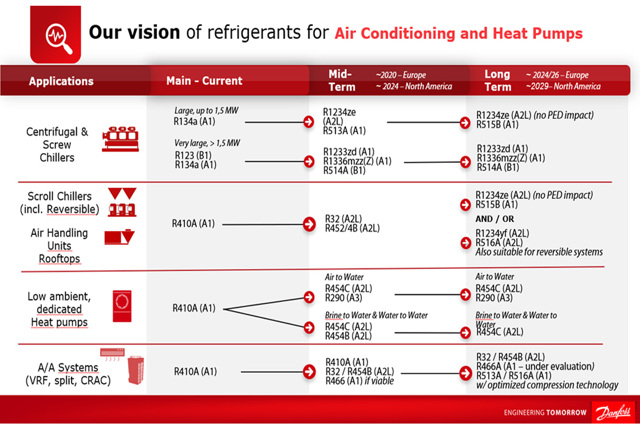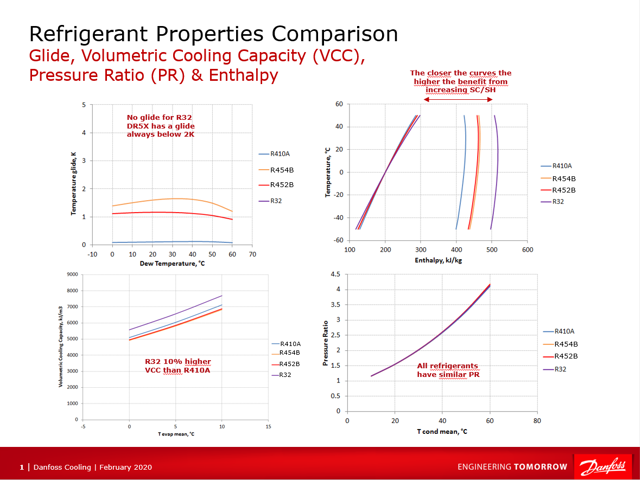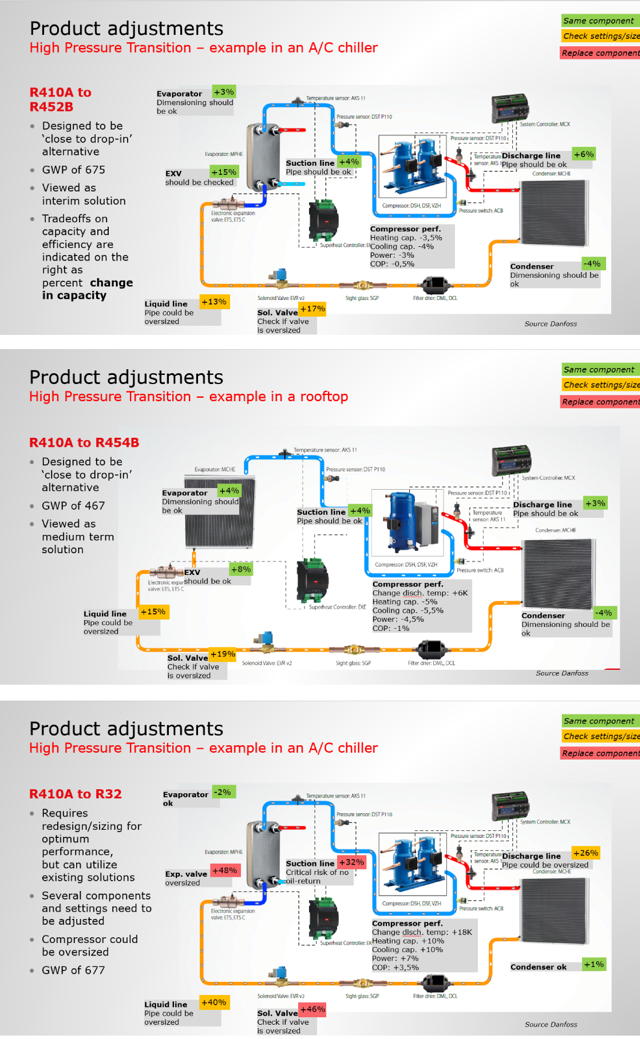
Manufacturers are increasingly moving towards lower-GWP and cost-effective alternatives to R410A in air conditioning applications. On this page, we'll explore the uses, advantages, and drawbacks of the following alternatives: R32, R452B, and R454B.
The 2016 Kigali Amendment to the Montreal Protocol—and other restrictions such as Europe's F-Gas regulations—have started the phase down of R410A and other HFCs. The aim is to reduce direct carbon emissions, and slow global warming.
The list of suitable replacements for these refrigerants is substantial.
R32, R454B, and R452B each have their advantages. All of them are low-GWP alternatives with interesting performance and efficiency capabilities.
Summary: R410A alternatives perform
In a new application, R32 comes out on top as the best performing and most efficient alternative to R410A—but it does need optimization. R452B and R454B offer easier drop-in replacement, along with the flexibility of a multi-refrigerant system. R454B also has a lower GWP, which means it might remain in use for longer as standards advance.
Refrigerant choice for each application should be made on a case-by-case basis. When replacing R410A, here's what you need to know:
- R452B: the same capacity as R410A, with slightly better efficiency
- R454B: slightly lower capacity than R410A but better efficiency; lower GWP
- R32: better efficiency and around 10% more capacity than R410A, depending on the application and system design
To learn more about moving from R410A to low-GWP, high-performance alternatives such as R32, contact your local Danfoss representative.



